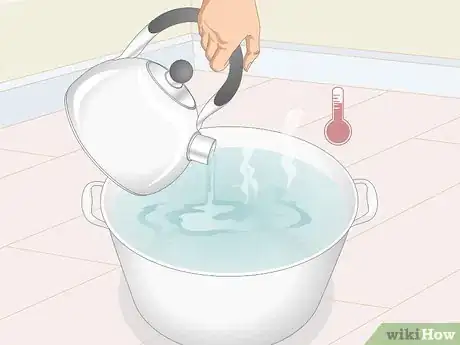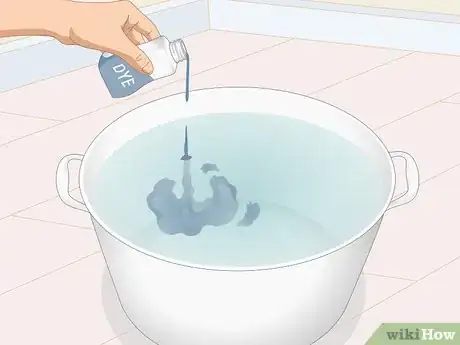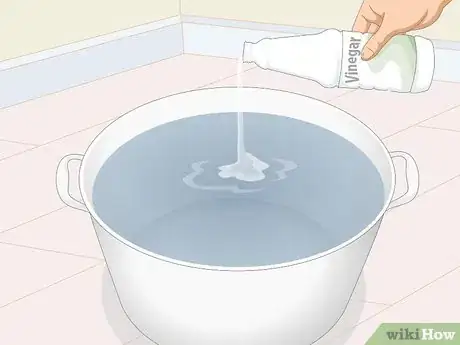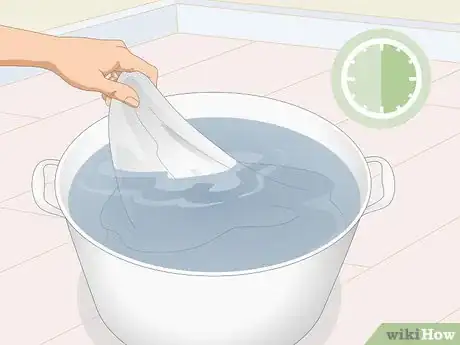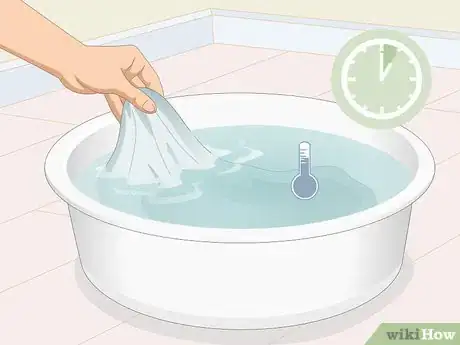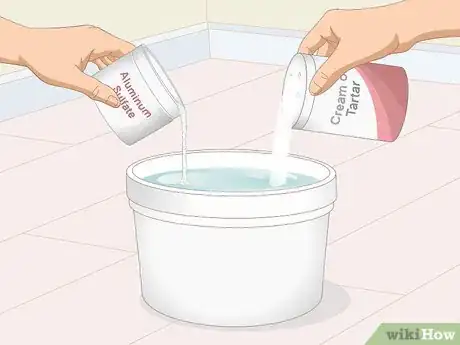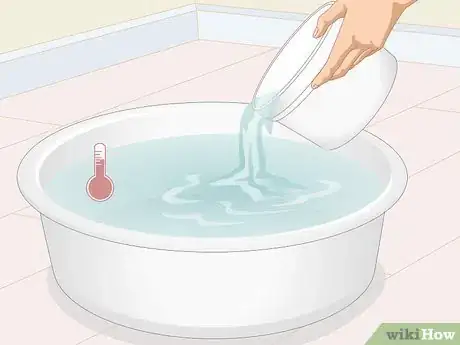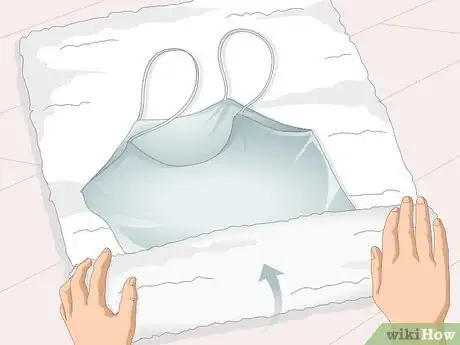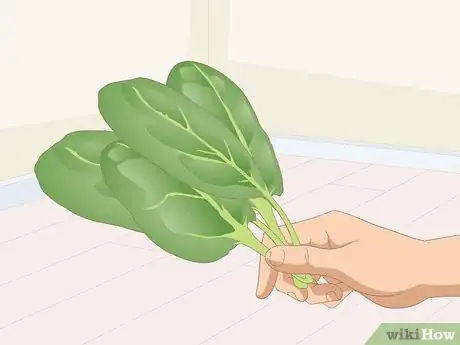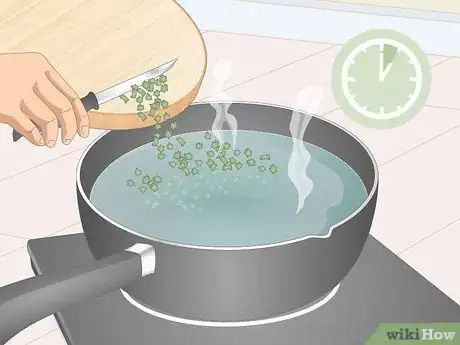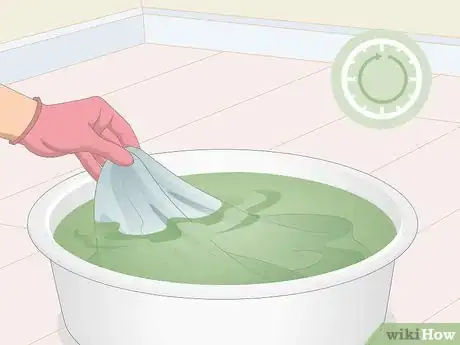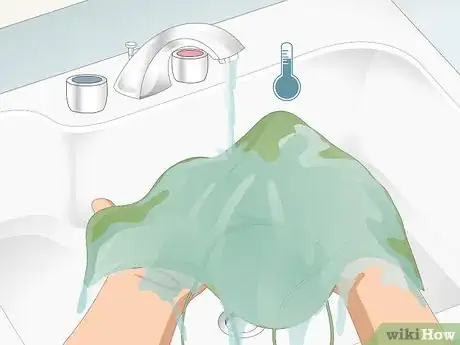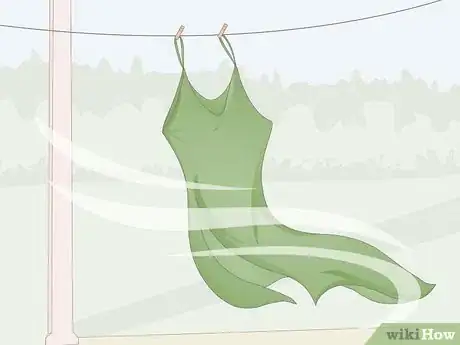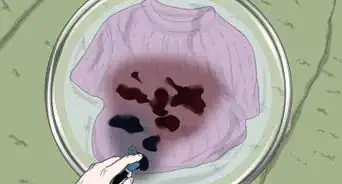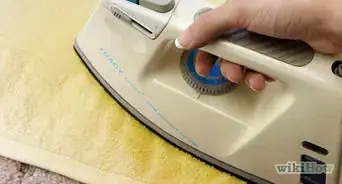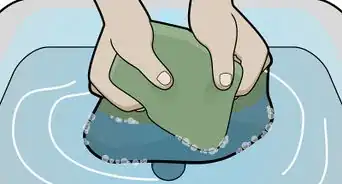This article was co-authored by wikiHow staff writer, Janice Tieperman. Janice is a professional and creative writer who has worked at wikiHow since 2019. With both a B.A. and M.A. in English from East Stroudsburg University, she has a passion for writing a wide variety of content for anyone and everyone. In her free time, you can find her working on a new crochet pattern, listening to true crime podcasts, or tackling a new creative writing project.
There are 12 references cited in this article, which can be found at the bottom of the page.
This article has been viewed 20,275 times.
Learn more...
Silk is a luxurious natural fabric that looks especially beautiful in different colors. If you’d like to try dyeing silk at home, mix the dye color of your choice into a large container of water and allow your material to soak. You can even use natural dyes, although you may need to prepare the fabric beforehand. But don't worry—our guide will show how easy it is to dye silk fabric yourself!
Steps
Soaking in Commercial Fabric Dye
-
1Heat enough water to fill a large bucket. Set a pot on your stovetop and fill it with enough water to submerge your silk. Turn the stove heat to the highest setting, and wait until the water starts to bubble. Turn off the heat before the water reaches a boil, or until bubbles are visible in the pot.[1] Once the water is hot, pour it into a large bucket or basin.
- If the water hits a boiling temperature, or 212 °F (100 °C), allow it to cool to at least 185 °F (85 °C) before continuing with the dyeing process.[2]
- If you’re using an acid-based dye, you might need to use a little less water to complete a “low water immersion” technique. Check the instructions on your dye container before you proceed.[3]
-
2Stir the dye into a large bucket or pot filled with hot water. Read the instructions on your dye package to determine the ratio of dye to water. Mix the dye thoroughly, and check the water mixture every few seconds to see if the dye has fully dissolved. Make sure that the water isn’t hotter than 185 °F (85 °C).[4]
- The amount of water and dye you will need depend on the project. For example, if you’re dying handkerchiefs, you’d only need 5 drops of dye mixture.[5]
Types of Dye
There are a lot of dyes to choose from when you’re looking to recolor your silk. For brighter colors, consider using an acid-based dye.
If you’re looking to paint with your dye, try a special dye paint that comes in jars.
Advertisement -
3Mix some vinegar in with acid-based dyes to help the color set. Read the manufacturer’s instructions of your acid-based dye to see how much vinegar is needed in the overall solution. If the dye package is labeled as “complete,” then don’t worry about adding any vinegar. If you’re working on a smaller dyeing project, like a silk handkerchief, then you probably won’t need to use as much.[6]
- Vinegar is especially useful for acid leveling dyes, as you have to make sure that the dye is a low pH before using it to recolor any silk.
-
4Place the silk into the mixture for at least 30 minutes. Fully submerge the material in the dye solution to let it soak. Stir the material on occasion, making sure that the silk is completely drenched. Depending on how vibrant you want the color to be, let the material soak for up to an hour.[7]
- If you want to work on something else while the silk is dyeing, consider setting a timer.
-
5Run the silk through a delicate cycle in your washing machine or rinse it by hand. Place the material in a very light cycle with the water temperature set to cool. Don’t include any heavy materials like denim, as this can damage the silk.[8] When hand washing dyed silk, fill a plastic basin two-thirds of the way full with lukewarm water, and add in around 0.25 cups (59 mL) of laundry detergent and fabric softener.[9]
- Cold water helps to rinse any of the extra dye out of the silk.
-
6Let the silk air-dry in an open space for a day. Drape the damp silk in a laundry room or other open area where it can receive plenty of air. Throughout the day, check on the silk periodically to see if it’s still damp. Don’t use your dyed material until it has dried completely.[10]
- Avoid drying your dyed silk in direct sunlight, as this can cause the color to fade.
- You can also dry your silk by steaming it over a pot of boiling water.
Tie-Dyeing Silk
If you’re looking to dye your silk in a fun variety of colors, consider tie-dyeing it. To do this, look for dyes that are cool or hot water fiber reactive dyes.[11]
Mordanting the Silk Before Using Natural Dye
-
1Place 4 oz (113 g) of silk in a large basin filled with cool water for 1 hour. Fill a large container with cool water until it’s at least two-thirds of the way full. Before dyeing your silk, let it soak for at least an hour. If you’re dying a piece of silk that weighs more than 4 oz (113 g), then be sure to use a basin large enough to fully submerge the material.[12]
- For more accurate dye measurements, weigh your silk ahead of time.
- No matter how much silk you’re dying, make sure that you have an 8 to 100 ratio of aluminum sulfate to silk along with a 7 to 100 ratio of cream of tartar.
-
2Dissolve aluminum sulfate and cream of tartar into some water. Create a dye mixture by dissolving 1½ tsp (21.8 g) of aluminum sulfate and 1½ tsp (1.65 g) of cream of tartar together in a small container of hot water. Stir both of the materials until they’ve completely dissolved into the cup.[13]
- Aluminum sulfate is known as a mordant, or a substance that preps the silk so that it can absorb a variety of plant-based dyes. You can find this at most stores that sell gardening supplies.[14]
-
3Pour the mixture in a basin of lukewarm water. Fill a large basin or bucket with lukewarm water, making sure that the water is deep enough to fully submerge the silk. Next, add the aluminum sulfate and cream of tartar into the water and begin to stir. Continue mixing the water, aluminum sulfate, and cream of tartar until they have completely dissolved in the basin.[15]
- Keep in mind that this process won’t change the color of the silk. Instead, it brightens and modifies the silk, making it more receptive to natural dyes.
-
4Soak the damp silk into the basin overnight. Check to make sure that the material is drenched after placing the silk into the mixture. Stir the material occasionally, making sure that all of the silk is evenly covered.[16]
-
5Hand wash the silk with 0.25 cups (59 mL) of laundry detergent and fabric softener. Put some gloves on before filling a basin with lukewarm water and placing your dyed silk inside. Next, add in a splash of detergent and fabric softener to the water. Wait around 10 minutes for the cleaning products to soak into the silk before wringing it out.[17]
- If you want to get the silk extra clean, feel free to rub the material with your fingers.
-
6Dry the silk by rolling it in a towel. Spread a towel out on a flat surface, like an iron board. Next, take the damp silk and layer it on top of the towel. Squeeze out any excess water by rolling up the towel lengthwise.[18]
- If you’d like the silk to dry faster, go over it with an iron on medium heat. To prevent the silk from burning, place a pillowcase on top of the silk before ironing it.
Using a Natural Dye
-
1Choose which plants to use for your natural dye bath. Pick a color that you’d like to dye your silk—it can be pastel or something darker. Keep in mind that many fruits and vegetables, when boiled, create natural dyes that you can use to recolor your silk. Go to your local grocery store or farmer’s market to get what you need ahead of time.[19]
- If you’re looking for certain colors, try these: yellow onion skins for orange-yellow, spinach for green, turmeric powder for yellow, avocado skins for peach-pink, red cabbage for violet, and black beans for blue.
-
2Chop the ingredients and simmer them over low heat for 1 hour. Set aside a large pot and fill it with tap water. Next, mix in the ingredients of your choice to achieve different color results. Slice up the vegetables and fruits into small pieces (less than 1 inch (2.5 cm) pieces) and add it to the water. Let the ingredients stew for about 1 hour.[20]
- Use enough tap water to comfortably submerge your silk item.
-
3Drain the raw material out and pour the dye water into a separate basin. Filter the dye as you pour it into a separate basin, using a colander to catch any of the solid pieces. Make sure that you have enough dye mixture for the amount of fabric that you plan on dyeing.
-
4Put the silk into the dye bath and let it soak overnight. Place your plain silk into the dye mixture, and make sure that it’s fully submerged. Check that the fabric isn’t crinkled when you place it in the water, or else it won’t have a consistent shade. Depending on how vibrant you want to color to be, let the fabric sit in the dye bath for at least 1 hour.[21]
- The longer the silk stays in the dye, the deeper the color will be.
-
5Rinse out the silk with cold water to get rid of any excess dye. Remove the dyed silk from the pot and hold it under a stream of cool, running water. Continue doing this until clear water is running out of the fabric. Finally, wring out the silk so that it’s no longer dripping wet.
- If you hang up the silk to dry while it’s still dripping, then it will take longer to dry.
-
6Hang the item up in an open area and let it air-dry. Check on the silk periodically over the next day or so to see if it’s still damp. Depending on the size of the item, you might have to let the silk dry overnight. Don’t worry if the color of the silk looks lighter after it dries—this is all part of the process![22]
Things You’ll Need
Soaking in Commercial Fabric Dye
- Solid color dye liquid
- Bucket
- Large aluminum pot (optional)
- Water
- Detergent
- Fabric softener
Mordanting the Silk
- Aluminum sulfate
- Cream of tartar
- Water
- Detergent
- Fabric softener
- Iron
- Pillowcase (optional)
- Rubber gloves
Using Natural Dye
- Natural dye (plants)
- Pot
- Bucket or basin
References
- ↑ https://whatscookingamerica.net/boilpoint.htm
- ↑ http://www.pburch.net/dyeing/FAQ/silk.shtml
- ↑ http://www.pburch.net/dyeing/FAQ/silk.shtml
- ↑ http://www.pburch.net/dyeing/FAQ/silk.shtml
- ↑ https://www.favecrafts.com/Tie-Dye/how-to-dye-silk-hankies
- ↑ http://www.pburch.net/dyeing/FAQ/vinegar_for_dyeing.shtml
- ↑ http://www.pburch.net/dyeing/FAQ/silk.shtml
- ↑ http://www.pburch.net/dyeing/FAQ/silk.shtml
- ↑ https://m.youtube.com/watch?v=iQ8sSQ_mkkM&t=0m47s
- ↑ http://www.pburch.net/dyeing/FAQ/silk.shtml
- ↑ http://www.pburch.net/dyeing/FAQ/silk.shtml
- ↑ https://www.motherearthnews.com/diy/home/alum-mordant-recipe-for-dyeing-silk-ze0z1312zbla
- ↑ https://www.motherearthnews.com/diy/home/alum-mordant-recipe-for-dyeing-silk-ze0z1312zbla
- ↑ https://www.merriam-webster.com/dictionary/mordant
- ↑ https://www.motherearthnews.com/diy/home/alum-mordant-recipe-for-dyeing-silk-ze0z1312zbla
- ↑ https://www.motherearthnews.com/diy/home/alum-mordant-recipe-for-dyeing-silk-ze0z1312zbla
- ↑ https://m.youtube.com/watch?v=iQ8sSQ_mkkM&t=0m47s
- ↑ https://m.youtube.com/watch?v=iQ8sSQ_mkkM&t=2m54s
- ↑ https://www.architecturaldigest.com/story/how-to-naturally-dye-using-foods
- ↑ https://www.architecturaldigest.com/story/how-to-naturally-dye-using-foods
- ↑ https://www.architecturaldigest.com/story/how-to-naturally-dye-using-foods
- ↑ https://www.architecturaldigest.com/story/how-to-naturally-dye-using-foods
- ↑ https://www.threadsmagazine.com/2013/03/12/how-to-dye-silk-organza
- ↑ http://www.pburch.net/dyeing/FAQ/naturalsafety.shtml
